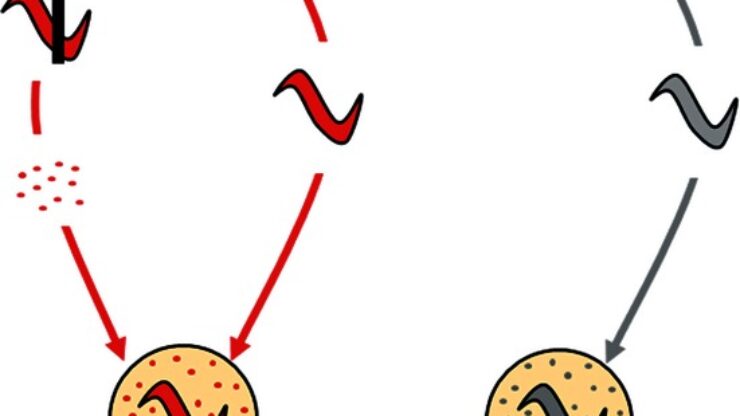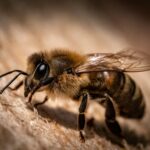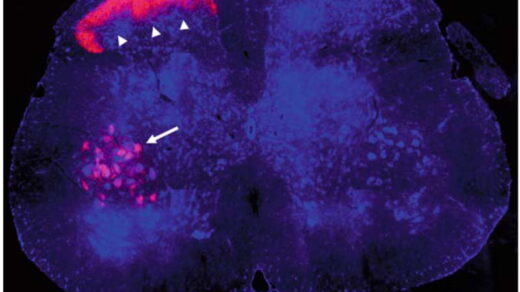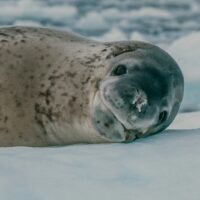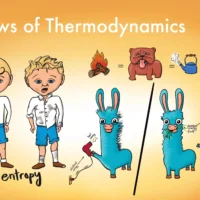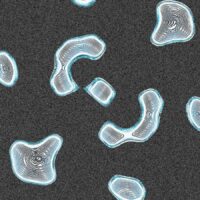PARASITE EVOLUTION
Evolutionary Associations Between Parasites and Hosts
A central concern among parasitologists examining evolution is the intricate relationship patterns between parasites and hosts, as well as their ecological and geographical distribution. Generally, these patterns are shaped by two primary factors:
Descent (evolutionary history)
Colonization (host switching)
Parasites may align with a host due to a shared lengthy evolutionary history (descent), wherein both have evolved concurrently, or because the parasite has colonized the host in a manner akin to island colonization. This colonization method is also referred to as host switching or host capture.
To elucidate the patterns of host/parasite association, it is imperative to ascertain whether these patterns result from descent, colonization, physical population separation, extinction, or a confluence of these factors. Phenomena like continental drift, orogeny (mountain formation), and island formation have significantly shaped the geographical distributions of hosts and parasites. The nexus between evolutionary progression and enduring geological transformations is termed phylogeography. A notable example of this dynamic appears in Perkins’s study of lizard malaria on Caribbean islands.
Employing various molecular techniques, life cycle traits, and morphology, she demonstrated that two strains of Plasmodium azurophilum in Anolis lizards exhibited distinct dispersal patterns across the Lesser Antilles. Additionally, the presence of this host-parasite system on an archipelago elucidated much of the colonization patterns among lizards, parasites, and participating mosquitoes.
Parasitologists apply cladistic methods, also known as phylogenetic systematics or phyletics, to deduce evolutionary histories of hosts and parasites.
Phylogenies represent evolutionary hypotheses, generally depicted as tree-like diagrams generated by computers, with relationships among taxa illustrated in the branching patterns. The characters utilized in constructing these phylogenies can be molecular, structural, ecological, or geographical. These characters are classified as either plesiomorphic (primitive, shared among both ingroup and outgroup members) or apomorphic (derived, evolutionary novelties, present only in the ingroup) by contrasting an ingroup (a taxon of interest) with an outgroup (a related taxon selected specifically for comparison). Apomorphic characters shared by ingroup members.
A group defined by synapomorphies encompassing a hypothetical ancestor and all its descendants is termed monophyletic. Conversely, a group containing a hypothetical ancestor but only some of its descendants is termed paraphyletic, and a group comprising taxa that lack a nearest common ancestor is known as polyphyletic.
Taxa (“groups”) may previously been defined based on questionable criteria, making it a priority for evolutionary biologists to identify monophyletic groups and address issues with others. A cladogram, for example, illustrates only nearest relatives rooted in the number of shared derived traits, taken as proof of shared ancestry. Phylogenetic hypotheses can be negated through further research. On the other hand, evolutionary trees have been posed as responses to inquiries concerning the origins or evolutionary histories of plant and animal species.
The work of Janine Caira and her colleagues on the tapeworms of elasmobranchs exemplifies both the excitement and challenges of investigating parasite evolution. These parasitologists concentrated on the tapeworm family, the Onchobothriidae. Initially, they defined a set of criteria by which such studies should be evaluated: both hosts and parasites must constitute monophyletic groups, all taxa should be accurately identified to the level of species, the host taxa must have been properly sampled, phylogenies for both hosts and parasites should be accessible, and parasites should exhibit host specificity. Their aim was to circumvent paraphyletic or polyphyletic groups. They subsequently compiled a data matrix on the tapeworms, utilizing an extensive array of structural features, including those revealed through electron microscopy, before conducting the cladistic analysis. Finally, they sought to rectify the identification challenges concerning both tapeworms and sharks to the best of their ability; the shark phylogeny was derived from the literature on elasmobranchs.
The tapeworm family Onchobothriidae encompasses around 200 species that demonstrate high host specificity, with each species found exclusively in a single species of shark. Caira and her team aimed to discern whether the distribution of parasite species among related hosts was attributable to shared descent and speciation or resulted from the colonization of hosts by parasites, disregarding host ancestry. Overall, limited congruence was observed between the evolutionary history of the parasites and their hosts. The parasites’ pronounced host specificity indicated descent association; however, the lack of congruence between phylogenies suggested considerable colonization. Furthermore, species classified under a single genus did not always align as each other’s closest relatives, highlighted by the case of the two Acanthobothrium species.
Parasitism and Sexual Selection
Parasitism plays a significant role in shaping the evolution of host reproductive biology. Indeed, sex has been proposed as a mechanism for mitigating the evolutionary consequences of parasitism.
The detrimental effects of parasitism on reproductive behavior and success have been documented across a diverse range of animals, from insects to mammals. The influence extends to both males and females, impacting egg production and mate choice. Females tend to select males based on their immunocompetence.
Mathematical models suggest that if pathogen prevalence or the types of pathogens fluctuate, females may forego selecting males purely based on disease resistance. Female birds, such as swallows, can discern parasitized from non-parasitized males, choosing mates accordingly.
Parasites often directly affect plumage quality—notably, through lice and acarines. However, infection with haematozoa, potentially affecting plumage indirectly, does not strongly correlate with either vector attraction or plumage quality. Variations in local ecological conditions that influence parasite transmission may easily overshadow any connection between parasitism and mate selection.
Haematozoa infections contracted early in a bird’s life can hinder its capacity to learn the songs vital for mating success. Mammals heavily rely on odors, with female mice eschewing males infected with both coccidians and nematodes. Fecal avoidance among large herbivores, like reindeer, reduces the risk of nematode parasitism. While behavioral responses to parasitism provide intriguing insights, their evolutionary significance remains to be established in numerous cases.
Evolution of Virulence
Life history traits and virulence are subject to evolutionary changes. It stands to reason that parasites should evolve into less virulent forms, as host death negatively impacts parasite survival.
Parasites may develop an optimal virulence that maximizes their numbers, with “optimal” contingent on factors like pathogenicity and transmission dynamics. Transmission occurs both vertically (across generations) and horizontally (within the same generation).
Vertical transmission generally selects for less virulent parasite strains, while horizontal transmission—especially with high transmission rates—favors more virulent strains. Factors like the genetic diversity of both host and parasite, host-parasite interactions, and differing timelines for transmission also influence the evolution of virulence.Parasite-host associations may arise from a long-shared evolutionary history known as descent, during which both have co-evolved. Alternatively, the association might occur because the parasite has colonized the host similarly to island colonization, a process also described as host switching or host capture. Understanding host/parasite association patterns necessitates determining if these patterns are an outcome of descent, colonization, physical population separation, extinction, or a mixture of these elements.

